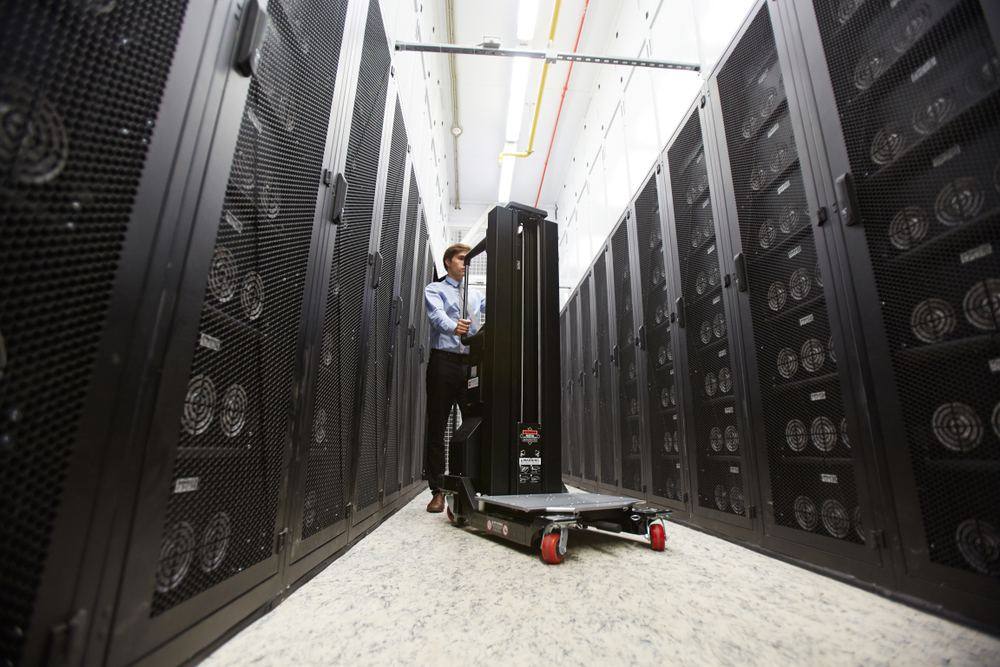Starlink Satellite Broadband – High-Speed Rural Connectivity

Starlink Satellite Broadband systems provide a solution to internet users living in rural areas.
Not only that, but the interstellar satellite broadband program could be a game-changer that breaks the monopoly on broadband services altogether. Could Elon Musk’s SpaceX prompt traditional internet service providers (ISPs) to step up their game?
Most, if not all, internet users have experienced slow speeds, low latency and non-responsive pages. The ‘Aw snap!’ message that pops up in Google Chrome does little to alleviate the frustration.
With more than half of UK businesses contemplating a hybrid model to give employees the autonomy to work when and wherever they like, reliable internet speeds are crucial.
However, there are a few problems.
Cloud-Based Broadband Solutions
In order for employees to maintain productivity levels from remote working locations and collaborate with team members effectively, cloud-based technologies such as Microsoft Teams are required.
However, employees that live in the countryside and other rural areas where internet connections and slow and unstable will not be able to operate efficiently in a Microsoft Modern Workplace.
Slow download and upload speeds hamper productivity and virtual meetings on video conferencing platforms are practically impossible on poor internet connections.
Living in deepest, darkest Kent, I know this from first-hand experience. Our home on top of the Kent Downs of Stalisfield receives measly internet speeds of around 1.5mbps through traditional broadband services.
To remedy the problem, I installed a 4G High Gain Antennae and Router with a Sim Card. This yielded 35mbps upload and downstream – a massive improvement, but still not good enough.
With two kids streaming Disney Plus and Netflix, Alexa streaming music and answering all kinds of strange questions, my access to Teams and Microsoft 365 was patchy.
Fortunately, help is at hand. SpaceX – Elon Musk’s outer-planetary project – has launched almost 1600 satellites into space with the promise of providing rural areas with high-speed broadband internet connectivity.
Having installed and trialled the beta version of Starlink Satellite in my Kent palace, I can personally confirm that Musk is delivering on his promise. I’m now getting speeds close to the 150Mbps limit.
If you’re working from home and live in an area the receives poor internet coverage, Starlink Satellite will give you access to high-speed broadband. To back up my claims, other people have had the same results as me.
What is Starlink Satellite Broadband?
In the last three years, SpaceX has launched some 1700 satellites from the Falcon 9 orbital rocket at Kennedy Space Center. The primary goal of the project is to provide internet users in rural areas with fast, reliable broadband.

The Starlink website reads: “Unbounded by traditional ground infrastructure, Starlink can deliver high-speed broadband internet to locations where access has been unreliable or completely unavailable.”
However, Musks long-term goal is to sell space-based internet connections to anyone on the planet. And that could be very worrying for traditional ISPs.
Although Starlink Satellite is still in the beta stage, the early signs look very promising indeed. SpaceX promise internet speeds between 50-150 megabits per second (Mbps) and latency from 20 to 40 milliseconds.
I can confirm that I ramped my re-engineered 35mbps internet connection to 150mbps. It’s no surprise to me that Starlink Satellite has received 500,000 preorders in addition to its 10,000 existing users.
Whilst more users may stymie internet speeds, SpaceX plans to launch a constellation of 12,000 satellites which they trust will meet supply and demand.
The real kicker is there are no data caps. And that will really ruffle the feathers of ISP monopolies.
But why do you need satellite internet? We’ve got 4G right.
There’s No 4G on the Farm
If you’re reading this out of curiosity but live in the city, you may be wondering what all the fuss is about. Your 4G internet connection hits somewhere in the region of 100Mbps right?
Or at least it’s supposed to be. However, internet monopolies never deliver on their promise.
According to commsbrief.com, the average download speed on broadband contracts is around 17 Mbps and an average upload speed of 12 Mbps on 4G LTE.
With LTE Advanced (LTE+ or 4G+), the average download speed maxes out at 66 Mbps and the average upload speed moved up to 17 Mbps.
In other words, the delivery is falling way short of the internet speeds you’re paying for no matter where you are.
In rural areas, internet speeds are even worse. As a matter of fact, referring to connectivity as “speed” is misleading.
Remember my original 1.5 Mbps…
And even when I ramped up the broadband to 35 Mbps, the service was still insufficient to handle the amount of data I need to process for my job. The existing solutions offered by traditional ISPs, there is no way to leverage faster speeds.
The only way to improve internet coverage in rural regions is to install fibre-optic cables. That solution is very expensive and very slow.
At present around 19% of UK homes and businesses can access a Fibre-to-the-Premises (FTTP) based broadband. The UK Government claim they have “an ambition” to install FTTP in at least 85% of premises by the end of 2025 – an ambition supported by a £5bn investment.
Ouch.

There is every chance that Starlink Satellite can provide solutions to rural locations that existing internet service providers cannot.
Satellite internet service doesn’t need to rely on physical cables and wires. They wirelessly transmit data much like satellite TV – only with broadband, data travels two ways so you can upload and download.
The key advantage satellite broadband has over traditional broadband is that it can be delivered anywhere in the world. Providing you have a Starlink antenna dish, a Wi-Fi router, a power adapter, cables and a mounting tripod, of course.
Satellite Internet Services v 4G Fibre-Optic Connections
Deciding between a satellite internet service and a 4G wireless connection should be a no-brainer for heavy internet users living in the city.
Fibre-optic 4G connections deliver upload and download speeds that are far superior to existing satellite service providers.
However, for people living in areas that do not have a fibre-optic 4G service, satellite internet may be your only option for a broadband-level service.
Existing satellite internet providers know this which is why they have a captive audience in rural areas. Subsequently, satellite broadband is more expensive than the standards provided by wire-cable services.
I won’t deny that Starlink is any different. The satellite dish in the starter kit is £500 and monthly subscriptions will set you back £85.
However, the difference between Starlink and existing satellite internet services is speed and latency.
For around the same price as Starlink, most satellite internet service providers only deliver bandwidth limits ranging between 10 to 30 GB a month.
That’s only slightly better than ADSL standards and is really going to hamper how much you can use your internet at a reasonable speed.
The highest bandwidth of 50GB a month is around £40 more expensive than Starlink but still only delivers 25Mbps download speeds and 3Mbps upload speeds – providing you stay within your 50GB limit. Once you’ve exhausted your limit, connectivity speeds are reduced.
In contrast, 4G broadband in the UK averages around £25 for unlimited data and hit speeds up to 66mbps.
Whilst satellite upload speeds can be faster than those offered by ADSL connections in rural areas, 4G broadband run through fibre-optic cables is the more cost-effective option for people living in the city.
As which.co.uk conclude:
“The high costs, latency issues and small data limits mean that satellite broadband isn’t likely to appeal to many people.”

Starlink Satellite is a game-changer for rural areas. No wonder competitors attempted to stop the progress of SpaceX with underhand tactics in the Supreme Court.
And that may not be the end of the story!
Could Starlink Satellite Provide Broader Broadband Solutions?
An interesting piece in The Verge reveals “most Americans live under the shadow of regional cable monopolies that dominate the broadband market with high prices, sadistic data policies, and poor customer support.”
You can be forgiven for thinking that America is much more vast than the UK, and therefore, more difficult to provide fast and reliable internet service to remote areas.
Well, yes, the UK does have a target to expand coverage to rural areas but it takes 4 years and cost £5 billion. Imagine how the government could put that £5bn to better use instead of funding BT et al.
Anyone that lives in the countryside knows full well that broadband companies do not meet the service levels we pay for.
And we need fast, reliable broadband speeds to harness the Microsoft Modern Workplace now – we don’t have four years to wait!
I suspect a lot of people in the city feel the same. A consumer survey highlighted that 7 out of 10 broadband customers said they had connectivity issues in the last 12 months.
So why are so many people disappointed with their broadband connection now they’re using more bandwidth?
ISPs blame slow download speeds on how your wireless router is set up and the number of devices connected to your hub.
However, the experience will tell you that is not necessarily the case. Internet speeds tend to drop off randomly regardless of the time of day or how many devices are connected to the internet at any one time.
Whilst higher traffic does slow the internet down, the fundamental problems with connectivity stem from the quality of your broadband service, not the number of users on your connection.
If you’re on a low-cost subscription, you will experience slow internet speeds because internet providers throttle your service and apply data caps in an attempt to move you to the of next-level service.
Yet people paying premium rates are not always receiving a premium service either. You’re paying for 100 Mbps and receiving – at most – 66 Mbps!
Other potential causes cited for slow internet speeds are that someone could have hi-jacked your intent subscription, you’re using a slow VPN or your area doesn’t have a strong signal.
However Fair Access Policies – also known as traffic management – applied by ISPs is the more likely cause. If you’re a heavy user, syncing huge amounts of data to the cloud – which remote workers will be doing – ISPs throttle your internet regardless of whether they claim you have unlimited bandwidth.
How To Install Starlink Satellite
Although the Starlink Satellite Broadband system is still in the beta testing stage, it is available for anybody that signs up for the service. To date, there are around 10,000 users worldwide.
The starter kit includes a small satellite dish which you install on your roof to receive signals from space. You will also need to download the Starlink app onto your Android or iOS smartphone and sync your satellite dish with your home router.
Alternatively, you can place the (rather large) Dongle into your desktop computer or laptop and connect from there.
Installation does involve running up and down ladders to the roof so if you’re afraid of heights, or not technically-minded, you might want to enlist the help of professional IT Support in London.
MicroPro can install Starlink Satellite Broadband system and distribute them using cable infrastructure together with the latest wireless access points for secure high-speed internet.
If you live in a rural environment and work from home, own a business or just want to improve the broadband, connectivity and resilience of your home broadband, MicroPro provides IT Support in London, Kent, Surrey, and beyond.
Beam me up Scotty. Ask the experts at MicroPro!


